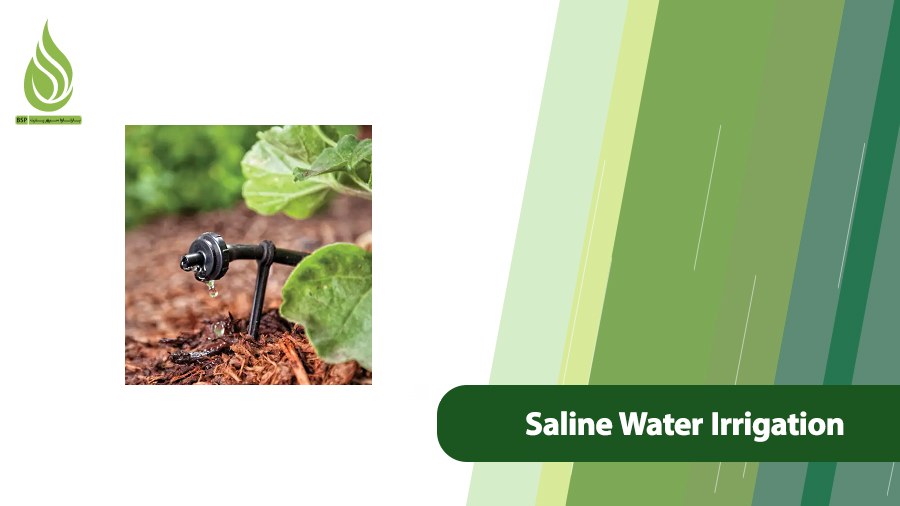
Saline Water Irrigation: What Is It and How to Do It?
Water is one of the most critical factors for plant growth, and its quality has a major impact on the health and productivity of agricultural crops. In many regions, especially in arid and semi‑arid areas, freshwater shortages pose a serious challenge. That’s why many farmers have turned to using saline water for irrigation. But can you really water crops with salty water? In this article, we’ll explore the effects of irrigating with saline water and discuss strategies for optimizing its use. Read on to learn more.
What Do We Mean by “Saline Water”?
Salinity in water or soil is a significant issue in agriculture. Water can become salty for natural reasons like the local climate, or due to human activities, such as over‑pumping of underground aquifers. With freshwater supplies dwindling and climate change exacerbating drought conditions, finding alternative water sources for irrigation has become increasingly important. One such alternative is saline or brackish water.
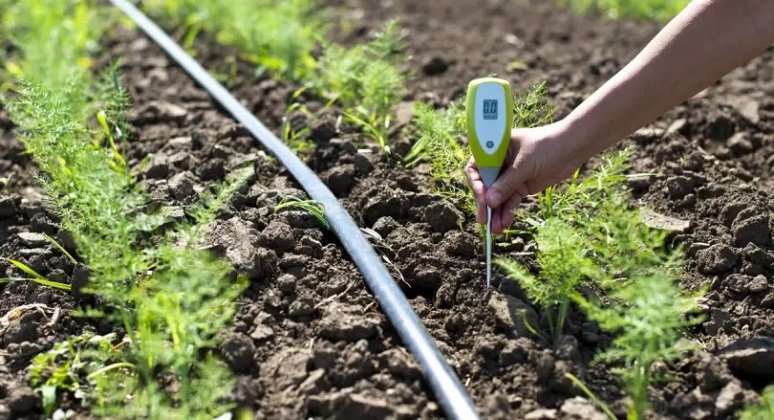
The main culprit behind water salinity is sodium chloride (common salt). Other dissolved minerals like calcium, magnesium, and potassium can also contribute to salinity.
We measure water salinity by its electrical conductivity (EC): the higher the EC value, the saltier the water. Water with an EC above 4 dS/m (deciSiemens per meter) is classified as saline. Sources of saline water include seawater, saline groundwater, agricultural drainage water, and some rivers.
Benefits of Farming with Saline Water
It’s true that saline water can weaken or even destroy plants, but when access to fresh water is limited, we have no choice but to use it. As the water‑scarcity and salinity crisis in water and soil grows more severe every day, we must adopt new solutions so that agricultural production doesn’t stall.
If we can balance the use of saline water in farming, water stress will decrease in many parts of the country. At the same time, fresh‑water resources will be preserved for other vital uses.
In the country’s central regions and provinces like Fars and Khuzestan, water scarcity and soil and water salinity are major issues. This problem is also rapidly spreading to other areas, including Khorasan, Azerbaijan, and various other provinces. Optimizing saline‑water use will prevent disruption of agriculture nationwide and reduce the need for food imports in water‑scarce regions.
Disadvantages of Irrigating Crops with Saline Water
Using saline water in agriculture conserves fresh‑water resources and makes use of salty water and land, but it also comes with its own challenges. First, we’ll explain the disadvantages of using saline water, then we’ll explore strategies to manage these issues.
- Most field crops are sensitive to salinity; irrigating with saline water reduces their growth.
- The saltier the water, the harder it is for plants to absorb it, so they remain thirsty.
- Saline water lowers the final quality of crops.
- Increased salinity reduces nutrient uptake.
- Saline irrigation leads to salt buildup in the soil, eventually rendering it uncultivable.
- Salt tolerant plants can grow with saline water, whereas many staple crops cannot withstand high salinity.
- Sodium ions disperse soil particles and destroy proper soil structure.
- Infiltration of saline water into groundwater aquifers contaminates fresh‑water sources, jeopardizing drinking water and traditional farming.
- High salinity decreases the activity of beneficial soil microbes, undermining soil fertility.
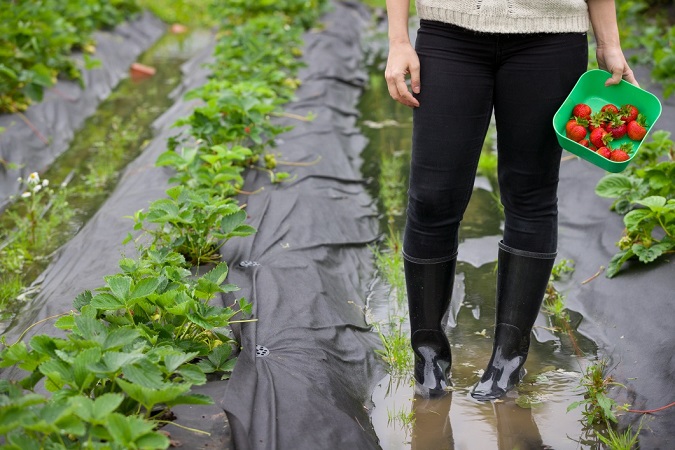
Note: Although farming with saline water can be a solution under water‑scarce conditions, it requires precise management, careful crop selection, and effective salinity‑control systems. Otherwise, long‑term use of saline water will degrade soil, reduce productivity, and cause economic losses.
Strategies for Managing Irrigation with Saline Water
To reduce the negative effects of saline water on plants, you can use the following strategies:
Choose the Right Irrigation Method
The best irrigation method in areas with saline water is drip irrigation. In this system, water is delivered directly to the roots and surface evaporation is minimized. Drippers distribute water around the plant; much of this water is absorbed by the plant, and some evaporates. With regular irrigation, residual salts are flushed away from the root zone.
- The ideal irrigation times are during cooler periods (late afternoon and nighttime).
- Apply enough water to wash salts away from the root zone.
- Never spray saline water on foliage, as contact with leaves causes burning and damage.
- If you must use surface irrigation, adopt methods that minimize evaporation.
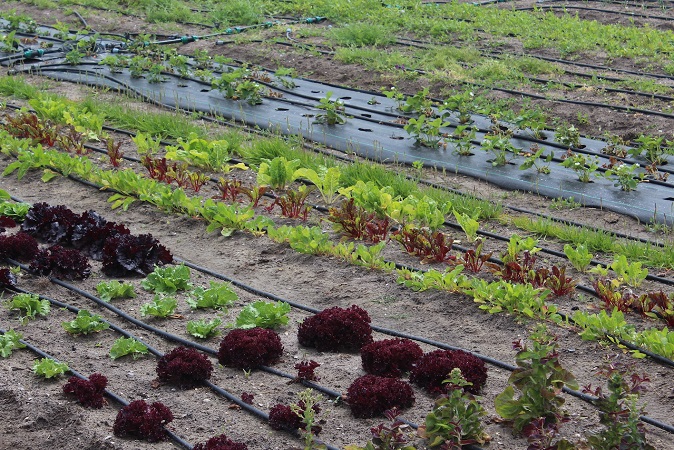
Improve Soil Conditions
One way to manage saline irrigation is by modifying soil conditions. Preparing a proper seedbed, improving soil texture, adjusting planting methods, and leveling the land are all important. If fields aren’t well‑leveled, water will flow along the slope and pool in low areas. As that water evaporates, salts accumulate on the surface.
- On fields with saline soil but fresh water, we control salinity with drainage. For saline irrigation, soil texture must tolerate salt.
- Clay soils are unsuitable for saline irrigation because they have poor permeability and higher rates of water loss through evaporation.
- Well‑drained, light‑textured soils (sandy‑loam) better withstand saline water’s effects.
- Adding organic matter and soil organic carbon increases water‑holding capacity and plant resilience.
- Alternating saline and fresh water, plus heavy leaching irrigations at set intervals to flush salts, are effective management practices.
- Pre‑planting irrigation with fresh water is another physical method to manage salinity. Since seedlings are more sensitive to salt, irrigate fields with fresh water before planting to wash away existing salts. Proper drainage then carries salts away.
- Other physical methods include keeping roots near the soil surface, soilless culture, and using salt‑tolerant bacteria to improve nutrient uptake.
Soil Nutrition Considerations for Irrigation with Saline Water
Proper soil and plant nutrition helps them withstand salt stress. Using the right fertilizers places the soil in optimal condition, supporting plant health and growth. Common soil amendments include sulfur‑based fertilizers and organic compost. Organic matter improves soil structure, while sulfur fertilizers help control alkalinity and salinity.
Under saline soil and water conditions, avoid fertilizers containing chloride. Apply reasonable amounts of calcium and nitrogen fertilizers to keep plants growing. One of the best options for areas with saline soil or water is ammonium sulfate fertilizer. Sulfate‑based fertilizers lower soil pH, making other nutrients available and preventing essential elements from becoming inaccessible to plants.
Ammonium sulfate combines sulfur (to reduce salinity) and nitrogen (to promote growth). It is highly effective in saline soils and waters, as well as in other non‑acidic soils.
Planting Salt‑Tolerant Species
Some plants are naturally more salt‑tolerant and can thrive with saline irrigation. These species typically grow in coastal or saline environments. Examples include barley, cotton, sugar beet, and trees such as pistachio, pomegranate, and date palm.
The approach of managing saline irrigation by selecting appropriate varieties is known as the biological method. If your local water has become saline, gradually adopt biological methods by planting salt‑resistant trees. Examples of salt‑tolerant trees include mulberry, oleaster (Russian olive), guava, Christ’s‑thorn jujube (Ziziphus), and pomegranate.
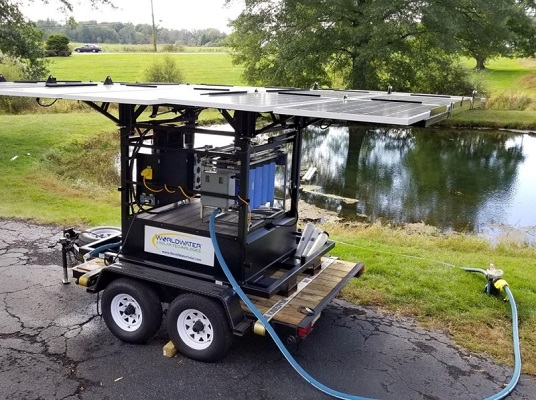
Use of Water Desalination Devices
The most modern, and also the most expensive method is to use water desalination devices. This approach, known as magnetic irrigation, can reduce water salinity by up to 98%. A desalination unit is especially well suited for treating seawater for agricultural use.
Conclusion
Although using saline water in agriculture presents challenges, under today’s water‑scarce conditions it is a solution worth considering, and even necessary. The key to success is a thorough understanding of the properties of the water, the plants, and the soil, paired with precise, scientific management. By following these principles, unconventional water sources can also be harnessed for sustainable agricultural development.